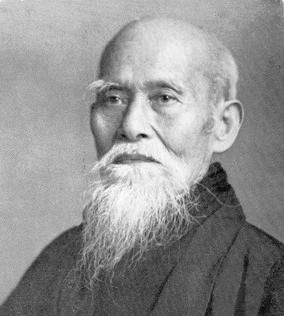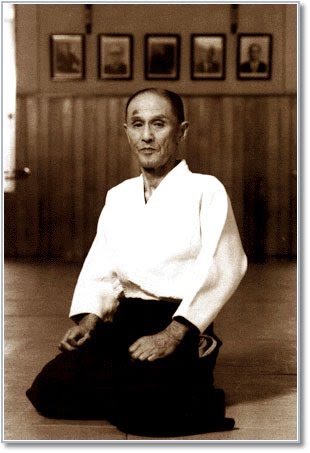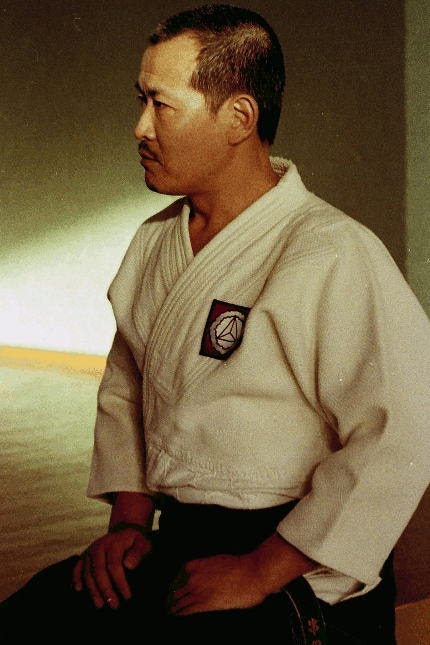Watch our video! This is what we are about!
Aikido Overview:
Aikido made its appearance in Japan as a martial art at the beginning of the 20th century, making it one of the most modern of the traditional arts.
Aikido is not a sport like many other martial arts. There are no tournaments or competitions. Students (Aikidoka) do not seek to “win” – they strive to learn to cooperate.
Aikidoka learn to see an aggressor’s attack as a mistaken and misguided action that puts the attacker outside the desired balance of nature and society. Aikidoka wish to neutralize an attack without serious injury to anyone. We want to encourage reconciliation and the creation of positive relationships; to restore the harmony of the universe. We don’t believe that can be accomplished by vanquishing or intending harm to another.
The “do” of Aikido translates as path or way. The first step along this path is to make a sincere commitment to open our minds to something new, then decide to persist in the study for at least a while. We then learn to move our bodies in new ways, such as taking a fall safely. We also learn to move in new ways with a partner. Eventually, the practice stresses strong focus and good timing, same-moment awareness, and moving appropriately with another’s energy. In Aikido, students practice redirecting an attacker’s energy in a way that stops but does not injure the attacker. It is accessible to most ages. The study is never ending and always interesting.
Aikido was founded in the 1920′s by Morihei Ueshiba, a lifelong student of “budo” (the warrior’s path) and a person with strong philosophical and spiritual interests.
Morihei Ueshiba
 Ueshiba conceived of Aikido as an alternative to the aggressive and violent martial arts of his day. He envisioned the purpose of martial arts in the modern world differently. Rather than creating a sport for the young, with contests and competition, Ueshiba created an art for civilians – not soldiers. He believed Aikido was for all ages, to be studied and refined throughout one’s life.
Ueshiba conceived of Aikido as an alternative to the aggressive and violent martial arts of his day. He envisioned the purpose of martial arts in the modern world differently. Rather than creating a sport for the young, with contests and competition, Ueshiba created an art for civilians – not soldiers. He believed Aikido was for all ages, to be studied and refined throughout one’s life.
His own words best reflect this essential difference between Aikido and other martial arts:
“The source of budo is God’s love and the spirit of loving protection for all beings…. True budo is to accept the spirit of the universe, keep the peace of the world, correctly produce, protect and cultivate all beings in Nature.” (from Abundant Peace, by John Stevens)
Aikido is all about energy (ki). In its essence, an Aikidoka will connect and blend with attacking energy, and then redirect or neutralize it. The attacker will find that his own attacking energy has been used to rob him of his balance.
Because Aikido stresses reconciliation with aggressors rather than purposefully damaging them, there are no kicks or damaging punches. Our movements exist for the sole purpose of neutralizing and restraining an aggressor. It is a “civilian” study in self-defense.
Aikido movements train the entire body to work as a unit. Movements are both energized and relaxed. Advanced training focuses on sensing and responding quickly to the attacker’s energy. Aikido teaches the use of power and balance rather than speed and strength
The Practice of Aikido
Aikido’s techniques use throws and pins that look similar in some respects to Judo or Jujitsu. The mindset is very different though. An Aikido student blends with and redirects attacking energy, rather than trying to overcome or defeat it.
As students quickly learn, the important parts of Aikido are often not obvious: focus, centering of energy, using the whole body well (including proper breathing), and being aware of everything in real time.

Aikido is a different martial art. We believe you become what you practice, so we practice non-aggression and cooperation, as a more useful form of self-defense.
The Process
The typical Aikido class opens and closes with bows of respect, warm up exercises, practice of techniques, and a short lesson in history, etiquette or other concepts. An Aikido class provides an individual with a supportive “laboratory“ to work on physical technique, psychological attitude, and mental process.
This laboratory is an environment that enables hard physical work, keen mental concentration, and immersion in traditions and customs that are different from those of modern America.
The lessons of cooperation, emotional openness, physical fitness, and self-defense are ones that are as important today in the United States as they were for Morihei Ueshiba in 1925 in Japan.
Yoshinkai style of Aikido
One of Ueshiba’s earliest and most gifted pupils was Gozo Shioda. In 1955, Shioda Soke founded Yoshinkai Aikido; the style which is practiced in our school. Shioda contributed much to the popularity that Aikido has enjoyed since World War II.
Gozo Shioda

Shioda recognized the genius of his teacher but also saw the confusion that frequently resulted from Ueshiba’s teaching style. He, therefore, conceived of a system of instruction based on a strong physical sense of the “basics.” He organized and refined the relatively loose movements common to most Aikido forms into a set of “classical forms,” each with a strong emphasis on good posture, minimal use of upper-body strength, and sharp focus of power.
In the Yoshinkai style, we have established movements and patterns that people all over the world try to follow. We also have a vocabulary that allows us to teach beginning students in such a way as to help them learn the difficult lessons of balance, center line, and extension of power.
Our emphasis is on the process of acquiring basic skills, postures, body movements, and attitudes that then allow us to do powerful applications of technique that stand up to the physical challenges of actual aggressors.
Takashi Kushida
One of Sensei Shioda’s most outstanding students was Takashi Kushida, who in 1973 moved to the United States to teach Aikido.

The senior instructors of our school were direct students of Sensei Kushida for almost a decade. Chris Howey began his study with Kushida Sensei in April of 1973 and Evelyn Dysarz started in December of 1973.
Evelyn and Chris assisted Kushida Sensei by creating his 501(c)3 organization, Aikido Yoshinkai Association of North America (AYANA), the first martial Arts organization ever incorporated as an education entity rather than as a sport. They served as Treasurer and Secretary, respectively, of that organization until 1982. They also started one of the largest of the AYANA affiliated dojos in the US at the time, the Wayne State University Aikido Yoshinkai Club. At Kushida Sensei’s request, they had created the University Aikido Association in 1974, prior to the existence of AYANA. The University Aikido Association was the first US non-profit organization associated with Yoshinkai Aikido.
Kushida Sensei, who eventually left the Yoshinkai to form his own style, has left a legacy of numerous skilled and dedicated Aikido teachers and students. He is popularly regarded as perhaps the most technically gifted of any of the earliest practitioners of Yoshinkai Aikido.